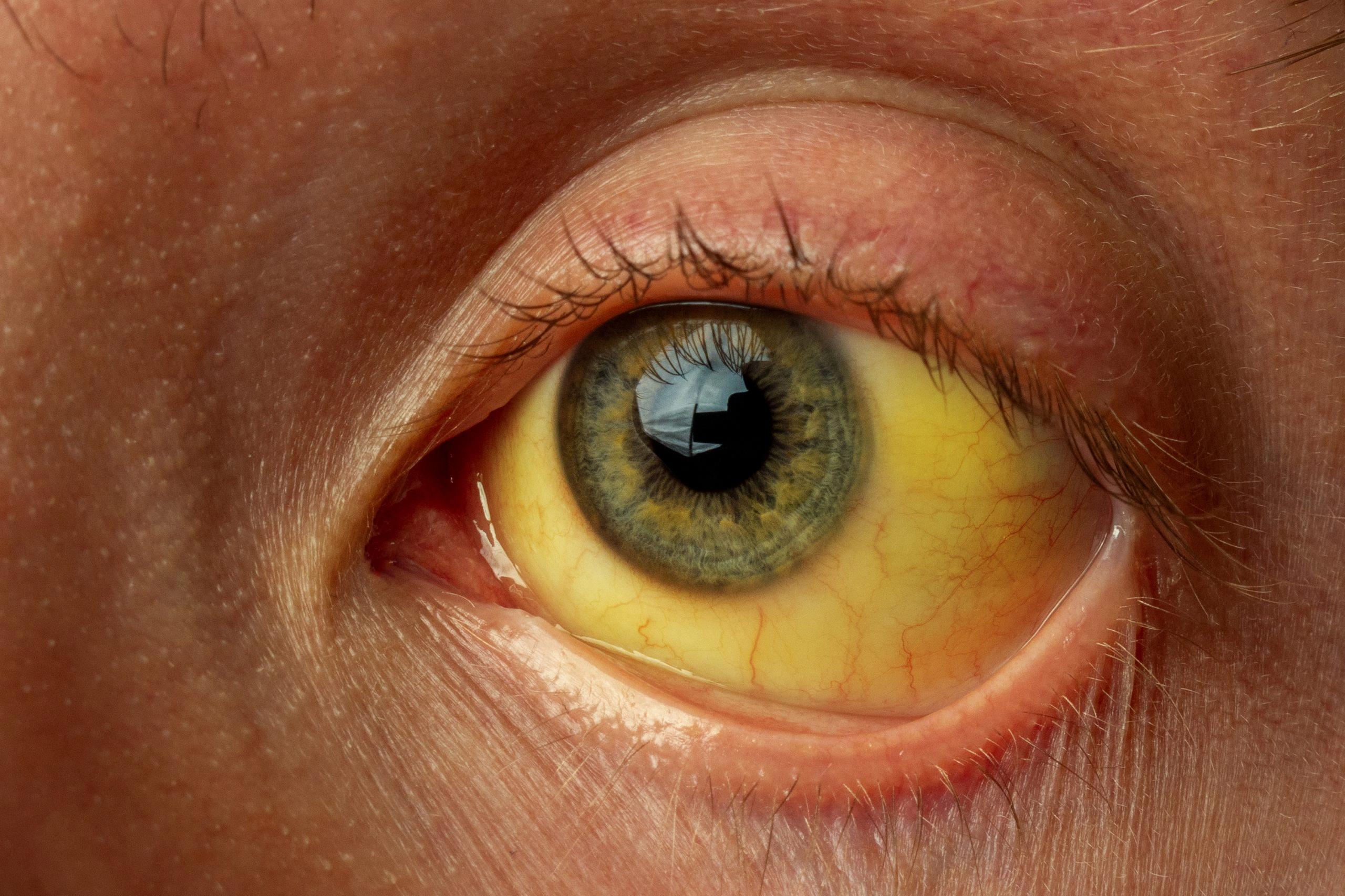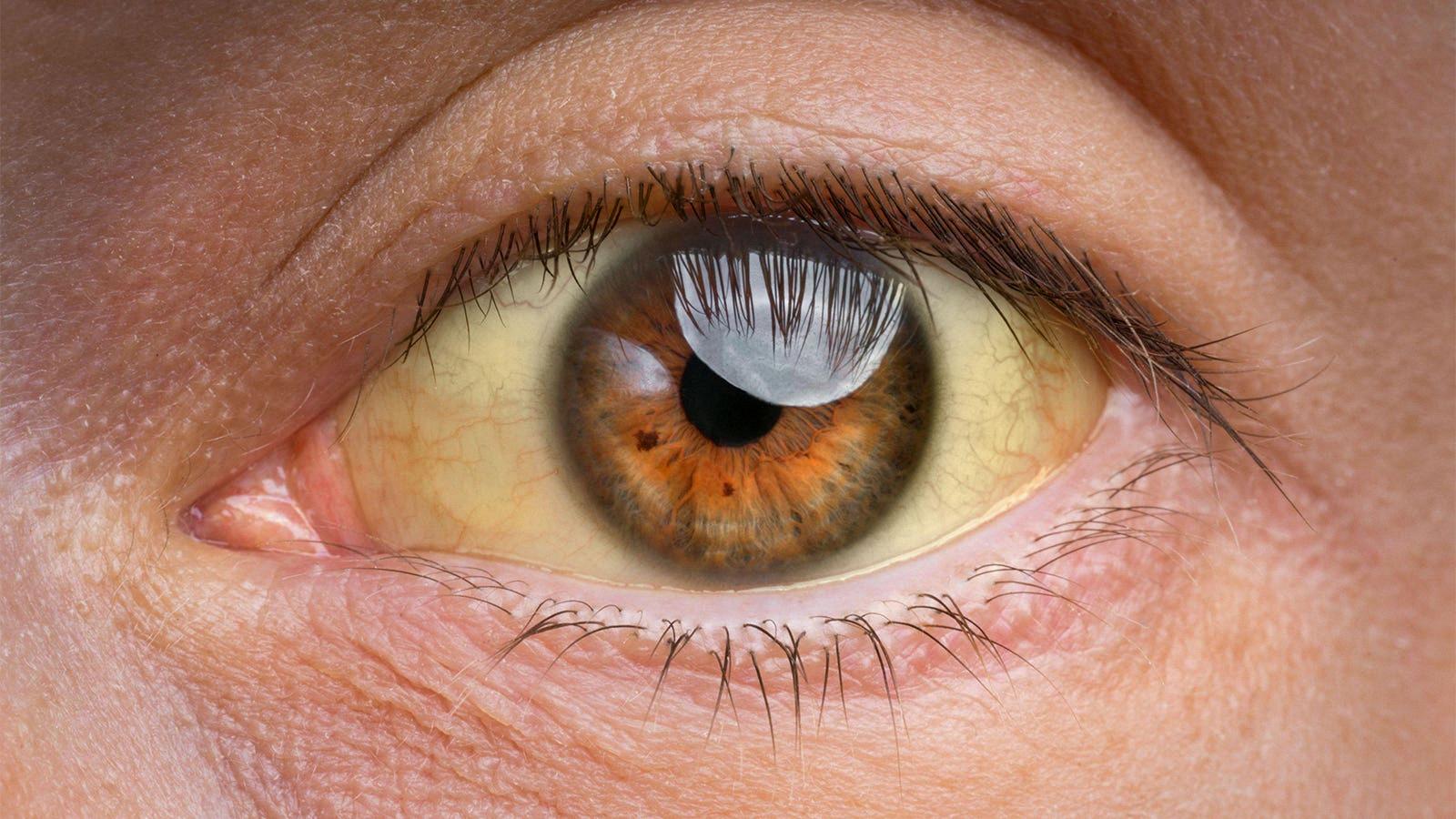Jaundice is a yellowing of the skin and the whites of the eyes caused by excess levels of bilirubin, a yellow pigment in the blood. It is considered an important sign of an underlying medical condition, such as liver disease or infection. While jaundice itself is not fatal, it can be an indicator of a srious health issue that can lead to death if left untreated.
For most newborns, jaundice is fairly common and usually resolves on its own within two or three weeks of birth. However, for some infants, jaundice can be more severe and lead to complications like kernicterus, a neurological disorder caused by high bilirubin levels in the blood. If left untreated, kernicterus can cause permanent brain damage and even death.
In adults, jaundice may also signal an underlying medical condition such as liver disease or cancer that requires immediate medical attention. Liver failure in particular can be fatal if left untreated. Symptoms may include easy bruising or bleeding, persistent yellowing of the skin and eyes (jaundice), intense itching and abdominal pain.
It’s important to keep in mind that not all cases of jaundice are life-threatening; many cases are mild and will resolve on their own with no long-term effects. However, it’s important to consult your doctor if you notice any signs of jaundice in yourself or your child so that they can investigate further and determine the cause. Early diagnosis and treatment may save your life!
The Impact of Jaundice on Mortality
Yes, jaundice can cause death. Obstructive jaundice, a type of jaundice caused by a blockage in the bile ducts, can lead to death if left untreated. In the early stages of the disease, death from obstructive jaundice is rare. However, after four to six months of the condition worsening and going untreated, patients may suffer a rapid deterioration and pass away. In order to prevent this outcome, it is important to receive proper medical attention for any signs or symptoms of jaundice as soon as possible.

Source: teachmesurgery.com
The Final Stage of Jaundice
The last stage of jaundice is known as end-stage liver disease, whih is a severe condition that can arise from long-term damage to the liver. Symptoms of end-stage liver disease may include easy bleeding or bruising, persistent or recurring yellowing of the skin and eyes, intense itching, dark urine, fatigue, weight loss, nausea and vomiting, abdominal pain and swelling, and confusion or changes in mental status. End-stage liver disease can be life-threatening if not treated promptly. Treatment options may include lifestyle modifications such as avoiding alcohol and certain medications; medications to reduce symptoms; procedures such as dialysis or transplantation; or surgery to remove part of the damaged liver.
The Severity of Jaundice
Yes, jaundice is a very serious condition and should not be ignored. It is caused by a buildup of bilirubin in the blood, which can be a sign of serious underlying conditions such as liver disease. If you notice that your skin or the whites of your eyes have turned yellow, it is important to seek medical attention immediately for diagnosis and treatment.
Survival Rate of Jaundice
The survival rate of jaundice among newborns is 94.6%. This means that out of every 1000 live births, 946 babies will survive while 54 will not. The majority of these deaths occur within the first two days of life, with 57% (105 out of 184) dying during this period. Even with this high mortality rate, the vast majority of newborns affected by jaundice during pregnancy will survive and go on to lead healthy lives.
The Relationship Between Jaundice and Liver Failure
Jaundice is a symptom of liver failure, but it doesn’t necessarily mean that the person has liver failure. Jaundice occurs when there is an increase in the amount of bilirubin, a yellow pigment produced during the breakdown of red blood cells, in the bloodstream. When too much bilirubin accumulates in the bloodstream and is not processed by the liver, it can cause a yellowing of the skin and whites of the eyes (sclera), known as jaundice. This can be caused by a variety of conditions, including hepatitis, cirrhosis, bile duct blockage, or acute liver failure. Therefore, jaundice is a sign that soething may be wrong with the liver but further testing and diagnosis are needed to determine if it is due to liver failure or another condition.

Source: goodrx.com
How Long Is Considered an Unsafe Duration for Jaundice?
If your baby’s jaundice persists for more than two weeks, it is important to contact your pediatrician as soon as possible. Jaundice that lasts longer than two weeks can indicate a more serious underlying medical condition that requires further testing. The doctor may order blood tests, ultrasounds, or other diagnostic tests to determine the cause of the jaundice and ensure that your baby receives the appropriate treatment.
Jaundice in Liver Failure
Jaundice is a symptom that typically occurs during Stage 3 of liver failure, which is known as cirrhosis. During this stage, the damage to the liver has become more severe, leading to the buildup of waste products in the body that can cause jaundice. Other symptoms associated with cirrhosis include pain and discomfort, fatigue, appetite loss, fluid retention, and an itchy feeling around the liver. If you experience jaundice or any other symptoms of cirrhosis, it is important to seek medical attention right away.
The Speed of Liver Failure Progression
Liver failure can happen quickly, sometimes in as little as 48 hours. Symptoms to look out for include fatigue, nausea, diarrhea, and discomfort in the right side below the ribs. If you experience any of these symptoms it’s important to seek medical care immediately because liver failure can be a life-threatening condition.
The Three Phases of Jaundice
The three phases of jaundice are prehepatic, intrahepatic, and posthepatic. In the prehepatic phase, an excess of bilirubin is produced due to hemolysis or other conditions that result in increased production of bilirubin. This type of jaundice is usually seen in newborns. The intrahepatic phase occurs when the liver fails to metabolize or excrete the bilirubin produced in the prehepatic phase. This can be caused by liver diseases such as hepatitis. Lastly, the posthepatic phase occurs when tere is a blockage of bile ducts due to gallstones, tumors or pancreatic cancer, causing a buildup of bilirubin in the bloodstream and resulting in jaundice.

Consequences of Not Treating Jaundice
If jaundice is not treated, it can lead to a serious condition called kernicterus. Kernicterus is a type of brain damage that occurs when thee are high levels of bilirubin in the blood. The effects of kernicterus can include hearing loss and athetoid cerebral palsy, which is a type of movement disorder that causes uncontrollable muscle contractions. The longer the jaundice goes untreated, the more likely it is for a person to develop these complications. Treatment for jaundice usually involves light therapy, medications, and/or blood transfusions. It is important to seek medical attention as soon as possible if someone is exhibiting signs of jaundice in order to prevent any more serious complications.
When Does Jaundice Cease to Be a Concern?
At around 2 months of age, jaundice is usually no longer a concern. By this time, the baby’s liver has become more efficient at processing the bilirubin that causes jaundice and it usually resolves on its own without causing any harm. However, if jaundice persists beyond this age or there are other symptoms present, it is important to speak with a doctor to rule out any underlying health conditions.
Curing Jaundice
Yes, jaundice can be cured. Treatment for infants typically revolves around changes in feeding practices and can also include blood transfusions in more serious cases. For adults, treatments may involve medical procedures such as gallbladder removal or ceasing to take medications that might be causing the jaundice. In some cases, lifestyle changes such as a healthier diet and more exercise can help reduce the effects of jaundice. In any case, it is important to seek medical advice as soon as possible to determine the best course of treatment for an individual’s particular situation.
Treating Jaundice: How Quickly Is It Necessary?
Jaundice should be treated as soon as it is diagnosed. Depending on the severity of the jaundice, treatment may take place in hospital or at home. For mild cases of jaundice, monitoring and follow-up is usually sufficient. If the jaundice is moderate to severe, phototherapy (light therapy) may be used, in addition to frequent tests to monitor the bilirubin levels in your baby’s blood. If the bilirubin levels remain high despite phototherapy, an exchange transfusion may be needed. This involves taking out some of your baby’s blood and replacing it with donor blood to lower teir bilirubin levels. It is important that jaundice is treated quickly and effectively to avoid any long-term health complications for your baby.

Source: medpagetoday.com
Causes of Jaundice
The main cause of jaundice is the buildup of a pigment called bilirubin in the body. Bilirubin is produced when red blood cells break down. When too much of this pigment accumulates in the body, it can cause a yellow discoloration of the skin and eyes (jaundice). This usually occurs due to liver or gallbladder problems that prevent bilirubin from being properly processed and eliminated from the body. In some cases, jaundice may be caused by other conditions such as pancreatic diseases, infections, or certain medications.
The Life-Threatening Risk of Jaundice in Adults
Jaundice in adults can range from a mild and manageable condition to a more serious, potentially life-threatening illness. In most cases, jaundice is caused by an underlying medical condition that can be treated with medication or surgery. Mild jaundice may not cause any physical symptoms and can often resolve on its own. However, more serious cases of jaundice may require treatment to prevent the spread of infection, reduce liver damage, or correct any underlying medical conditions. In some cases, jaundice can be fatal if it is not treated promptly and correctly. If you have been diagnosed with jaundice, it is important to speak with your doctor abut the best treatment options for your particular case.
Conclusion
Jaundice can be a serious condition, and it is important to seek medical attention if you experience any symptoms. Although death from obstructive jaundice in the early stages of the condition is rare, it is still possible and can occur within four to six months after diagnosis. The risk of mortality is further increased in neonatal cases, with an estimated 2.4 per 1000 live births dying within the first two days of life. Therefore, it is important to recognize jaundice symptoms as soon as possible and seek medical advice quickly to reduce the risk of death.
